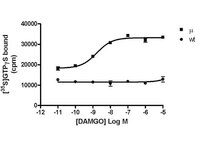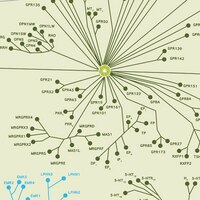HTS101M Sigma-AldrichCHEMISCREEN™ MEMBRANE PREPARATION RECOMBINANT HUMAN µ (Mu) OPIOID RECEPTOR
Human Mu / OP3 / MOP / MOR GPCR membrane preparation for GTPγS Binding & Radioligand Binding Assays.
More>> Human Mu / OP3 / MOP / MOR GPCR membrane preparation for GTPγS Binding & Radioligand Binding Assays. Less<<Prodotti consigliati
Panoramica
Tabella delle specifiche principali
| Species | Host Cells | Protein Target |
|---|---|---|
| Human | Chem-5 | Mu / OP3 / MOP / MOR |
| Product Information | |
|---|---|
| Format | Membranes |
| Presentation | Liquid in packaging buffer: 50 mM Tris pH 7.4, 10% glycerol and 1% BSA with no preservatives. Packaging method: Membrane protein was adjusted to the indicated concentration in packaging buffer, rapidly frozen, and stored at -80°C |
| Quality Level | MQ100 |
| Storage and Shipping Information | |
|---|---|
| Storage Conditions | Maintain frozen at -70°C for up to 2 years. Do not freeze and thaw. |
| Packaging Information | |
|---|---|
| Material Size | 200 units |
| Global Trade Item Number | |
|---|---|
| Numero di catalogo | GTIN |
| HTS101M | 04053252323010 |








